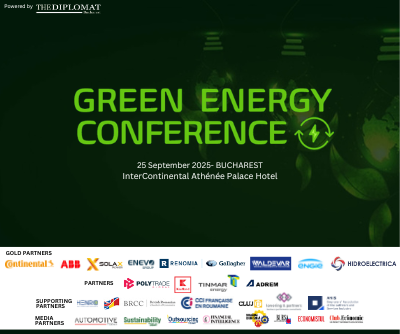Procurement principles to obtain project funding under the PNRR

Opinion by Noerr experts: Raluca Botea, Counsel, Public Law Practice Coordinator Romania & Diana-Maria Bejenaru, Associate, Bucharest
Romania’s National Recovery and Resilience Plan (PNRR), designed to ensure an optimal balance between EU priorities and Romania’s development needs, provides significant opportunities for the private sector to benefit from financing to build and/or consolidate infrastructure capacity.
However, whether expenditures incurred in a development project are eligible for funding depends on how precisely the private beneficiary has developed and organised its procurement procedures.
In this context, private beneficiaries, which are not public authorities or assimilated authorities and to which public procurement legislation does not apply, must pay particular attention to the manner in which they select partners to collaborate on projects financed with PNRR funds, keeping in mind that the management authority could refuse to fund non-compliant procurements.
Practical issues in acquisitions organised by private beneficiaries
The legislation and official guidelines available at the moment do not provide clarity on each stage involved in a procurement procedure nor on how the general principles of public procurement should be followed.
Thus, in practice, many controversies have arisen concerning the boundary between procurement procedures organised by private beneficiaries and the general rules applicable to traditional public procurement.
Only a few economic operators benefit from internal procurement policies, usually only those that generally work with contracting authorities or have implemented internal rules on procurement. In the absence of express regulations, procedures organised by private beneficiaries are established on a case-by-case basis according to customary practices.
Consequently, we propose addressing certain practical issues related to the principle of transparency, a principle that must be followed by private beneficiaries in their procurement procedures.
The principle of transparency is the guarantee for interested economic operators that the procurement procedure will be organised and carried out properly and that principles of equal treatment, non-discrimination, etc. will be observed. In order to comply with this principle, the procurement documents must not contain restrictive requirements and must be accessible to all economic operators interested in taking part in the procurement procedure (notice of commencement of the procurement, tender book, etc.).
One problem encountered in practice is unclear or incomplete tenders, which often lead to delays in finalising the procurement and even to the disqualification of certain bidders. Not all bidders comply with certain standards of tender writing, which causes private beneficiaries to be unable to compare the tenders, or even to be obliged to penalise bidders that have not understood the project requirements by disqualifying their tenders.
Conversely, when the tender book is overloaded with all technical details related to the project (e.g. indicating the technical specifications of a certain type of equipment according to the technical data sheet or including the timetable for the execution of the work directly in the tender book), the contributions of the tendering economic operators are drastically reduced.
Excessively detailed tender books may jeopardise the authenticity of the procurement if the private beneficiary’s procurement file contains only one admissible tender, possibly identical to all the technical specifications of the tender book.
The wording of the tender book plays a crucial role in supporting tenderers in drawing up their technical and financial tenders, and it is advisable to make the project structure as clear as possible, indicating each piece of equipment to be supplied or each activity/work needed for the execution of the project.
In this manner, each economic operator interested in participating in the procedure has all the data necessary to clearly understand the purpose of the procurement and decide on its own ability to fulfil it without the need for further clarification, and the tenders in the organising private beneficiary’s procurement file will reflect this fact.
Each tenderer is also given the opportunity to present its own proposals for implementing the project in compliance with the guidelines laid down by the private beneficiary, thus reducing the risk of receiving only one tender identical to the provisions of the tender book.
The principle of transparency is further reflected in various documents that become public/are communicated, such as the report on the procedure. The purpose of this report is to check all the admissibility criteria of the tenders and compare them in order to declare the winning tender.
Publishing this report or sending it to the tenderers safeguards their right to understand the reasons for selecting the winning tender and their ability to contest this result.
On the other hand, the principle of transparency is not absolute, but is subject to certain limitations in terms of information that could distort the competitive environment. Not all the information received from tenderers can be made public, as publishing some information could be detrimental to tenderers’ business.
Article 57 of Law no 98/2016 on public procurement (which, as stated above, applies to procurement by private beneficiaries only in principle) reveals the categories of information in technical and financial proposals that may be confidential: personal data, technical or trade secrets or information protected by an intellectual property right.
It is even more difficult to determine what information should not be disclosed since tenderers do not indicate the information as confidential in most cases. In this context, it is advisable to analyse each tender on a case-by-case basis and to draft the procurement report protecting the confidentiality of the abovementioned categories of information as well as possible.
Transparency in the context of acquisition value
The public nature of a procurement process also extends to the estimated value of the procurement. In order to facilitate the process of verifying eligible expenditure, certain official guidelines oblige private beneficiaries to state the estimated acquisition value for each category of eligible expenditure.
The question that arises in practice is how this distribution of the total amount by category of fundable expenditure will be reflected in the tenders.
Although in principle it is not mandatory to prepare a tender form (to be used by tenderers and attached to the tender), this may be an optimal procedure for projects requiring more than one type of equipment and/or implementation stage.
Thus, private beneficiaries may publish, together with their tender books, tender forms containing the categories of eligible expenditure to be completed by the tenderers and attached to the financial proposal, ensuring a correlation between the amounts estimated by the private beneficiary and the winning tender.
Conclusion
Organising a procurement procedure can be a challenge for private beneficiaries in the absence of rules setting out in detail all aspects of how tenders should be submitted and evaluated.
However, a clear procurement file, which follows the general principles of procurement procedures, determines the eligibility of project expenditures and will also help the competent authority to analyse the eligibility of expenditures and approve the funding requested by private beneficiaries.















